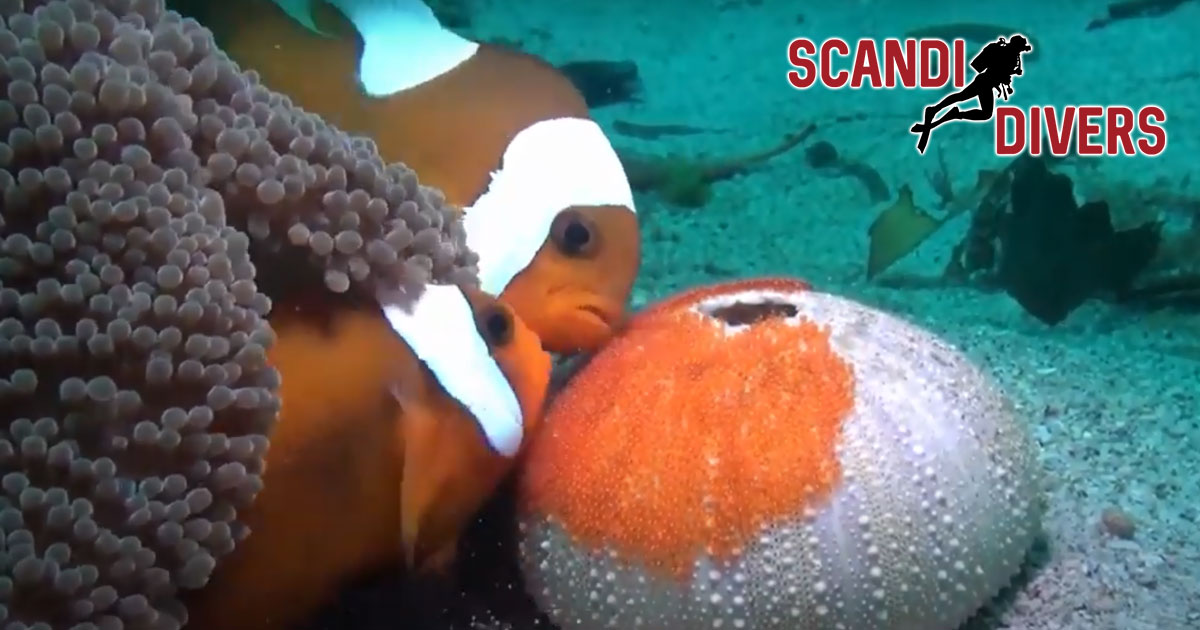There’s a small but feisty species of fish that have evolved to live in a dangerous place in the ocean. Sea anemones may look beautiful, soft and colorful but they are armed to the teeth with tiny little darts that are used to poison fish before being eaten. That has never bothered anemone fish, they have been blessed by evolution to become bulletproof in the anemone world. Due to this blessing the anemone – anemone fish symbiotic relationship has become one of the most famous in the underwater world.
There are twenty-eight species of anemone fish worldwide, they form part of the damselfish gang. There are over eleven hundred species of anemone but only ten are used by the anemone fish. Once they decide on which to call home there are some rules which keep the house in order. There is only one female, she mates with the largest male. Once the female dies the broken-hearted male will swap genders to become the new mother and will then mate with the next male in line. Eggs are carefully laid very close to the anemone, they are attached to the reef or if on sand they use items like empty coconut shells. The parents take it in turns on aerating and cleaning them. After a while you can see tiny little eyes forming, after around fourteen days they all hatch.
If you are lucky enough to see some eggs you will notice parents are very vigilant, doing everything to protect the young. After watching these guys for many years there has been some very brave behavior. One fish took a very small bite out of my cheek, you could see tiny teeth marks on my face. Another headbutted the glass in my mask multiple times in an effort for me to vacate the area, one was biting the cloth of my rash guard trying to drag me away. You could say they are the Chuck Norris of the reef, even though we are million times bigger they will not be intimidated.
On the many dive sites of Puerto Galera, you can witness this amazing behavior while scuba diving. The most common species of anemone fish are Clarke’s, False clownfish, Saddleback and Pink. The most common anemone species are carpet, magnificent and bubble tip. They come in a few colors like orange and green. They can be found on most reef and muck diving sites. They are found at depths from five to thirty meters typically.
We hope you enjoy seeing these guys on your next dives at Scandi divers resort and remember don’t get to close if you value your life. We have made a short video for you to watch about anemone fish. Please like our Facebook page and subscribe to our YouTube channel.









